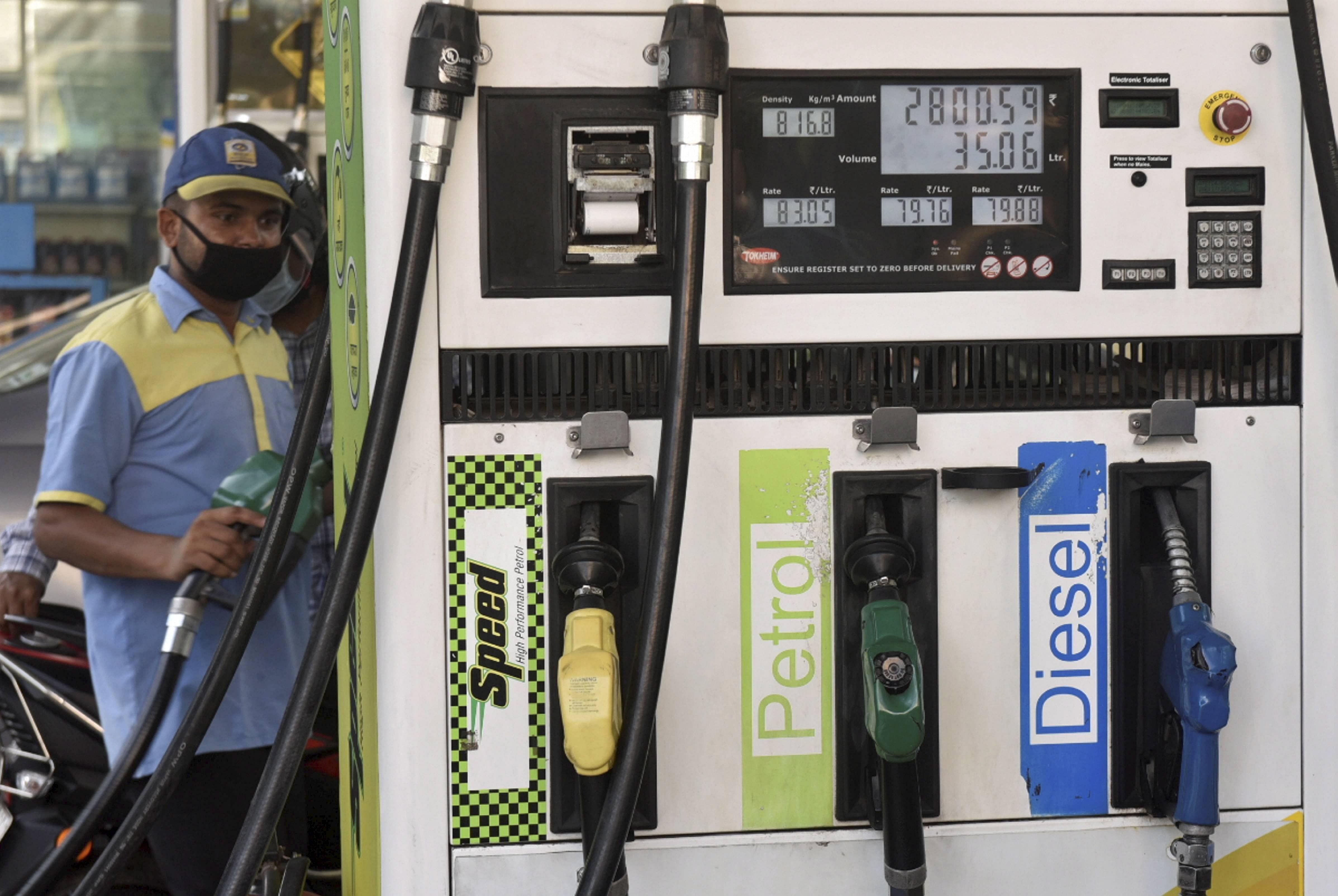
Petrol price on July 3 in Delhi was 80.43 a litre, a Rs 9.13 increase in 28 days, from June 6, and has stayed there since even as diesel price, now higher than that of petrol, continues to inch upwards as prices change every day at 6 am.
Why are petrol and diesel prices so high? Is it due to the high import cost and a weakening rupee? It is true that crude price of the Indian basket (what the country imports) increased from $19.90 a barrel in March closer to $40 now. And the rupee has fallen – from Rs 75.27 to the dollar to almost Rs 76. At this increased crude and dollar rates, a barrel (159 litres) of crude oil costs Rs 2,325, which works out to Rs 14.62 a litre. So, import cost and weak rupee are not the reasons for the rise in petrol and diesel prices at the pump.
Unfounded excuses
Not just today, but these excuses for rising prices have been invalid ever since the government withdrew its price determination role, or the administered prices mechanism. We are made to believe that the high crude prices are the culprit whereas there is no link between crude import price and the price at the pump. Consider the situation in 2013, when crude price was at a high $111.59. At the then prevailing rupee-dollar exchange rate of Rs 66.89, the per-barrel crude rate was Rs 7,464 and per litre Rs 46.94. But petrol in Delhi was sold at Rs 76.06 then. Similarly, in 2018 the per litre cost, factoring in the extant exchange rate and the crude price at that time, was Rs 33.90, but petrol was still sold at Rs 76.
Even in April 2020, when crude price bottomed out to $19.90 and dollar exchange rate was Rs 75.27, imported crude cost Rs 9.42 a litre, but petrol was still being sold at over Rs 70.
The second reason often given for the high fuel prices is the heavy subsidies the government gives to the oil sector. The government’s compiled figures, petroleum and natural gas statistics, themselves refute this claim. The oil sector contributed Rs 4,56,530 crore to the government in 2017-18. The contribution included: Royalty from crude oil (Rs 12,057 crore), royalty from gas (Rs 1722 crore), Oil Development Cess (Rs 13,544 crore), Excise and Custom duties (Rs 2,13,012 crore), sales tax (Rs 1,86,394 crore) and dividend (Rs 29,801 crore). Similarly, the provisional estimates of gains for 2018-19 is Rs 4,33,062 crore.
Oil pays for all subsidies
As per the government’s data, the share of the petroleum sector in total subsidies has increased from 8.3% (Rs 24,833 crore Revised Estimate) in 2018-19 to 11.1% (Rs 37,478 crore) crore in 2019-20 Budget Estimate. But this amount is peanuts compared to what the government gets from the sector, more than Rs 4 lakh crore! The total subsidy of the government in 2017-18 amounted to Rs 2,24,455 crore, which included the subsidy on food (Rs 1,00,282 crore), fertilizers (Rs 66,468 crore), petroleum (Rs 24,460 crore), interest subsidies (Rs 22,146 crore) and other subsidies (Rs 11,099 crore). The total subsidy budgeted for 2019-20 was Rs 3,38,949 crore. This means, the petroleum sector is taking on it the entire subsidy burden of the government.
High profits to companies
Similarly, the claim of the oil companies sustaining losses is baseless. On the contrary, they are making huge profits. As per the latest official data, the net profit earned by public sector oil companies during 2018-19 was Rs 69,714 crore, which was higher than Rs 69,562 crore in 2017-18; ONGC earned the highest profit of Rs 26,716 crore, followed by IOCL, Rs 16,894 crore, and BPCL Rs 7,132 crore. So, the excuse of losses is an outright false claim.
The under-recoveries, to whatever extent they are shown, are also not losses. In simple terms, the under-recoveries are the difference between the actual price the petroleum product is sold at and a notional price, a lower than expected profit, but not loss.
Another reason often quoted for high fuel prices is India’s high dependence on crude imports. It is true that India’s dependence on imports is high, but it is not a justifiable cause for high petrol, diesel and other product prices. True, domestic production of crude is only 34.20 million metric tons (MMT) against the consumption of 213.22 MMT (2018-19 figures), which means an 84% import dependence. But India imports more crude than is domestically consumed. It refines the additional volume and sells the products outside India.
The Petroleum Oil and Lubricants (POL) exports in 2018-19 were worth Rs 2,67,697 crore; the weak rupee gives additional benefit here, which is not much talked about. Petroleum product exports account for 11.6% of the country’s total exports Rs 23,07,663 crore. So, import dependence is not a good excuse for high petrol and diesel prices.
There is, therefore, no justification in not sharing the benefits of low international crude prices with the people by lowering the prices of petrol and diesel. Needless to add, the high petrol and diesel prices have a high cascading effect on prices in general and have the potential to further cripple the Covid-19 ravaged economy. The government will do well to review its fuel pricing policy and make it transparent at least now, and should stop the constant rise in petrol and diesel prices and thereby of other goods.
(The writer is a Development Economist and commentator on economic and social affairs)